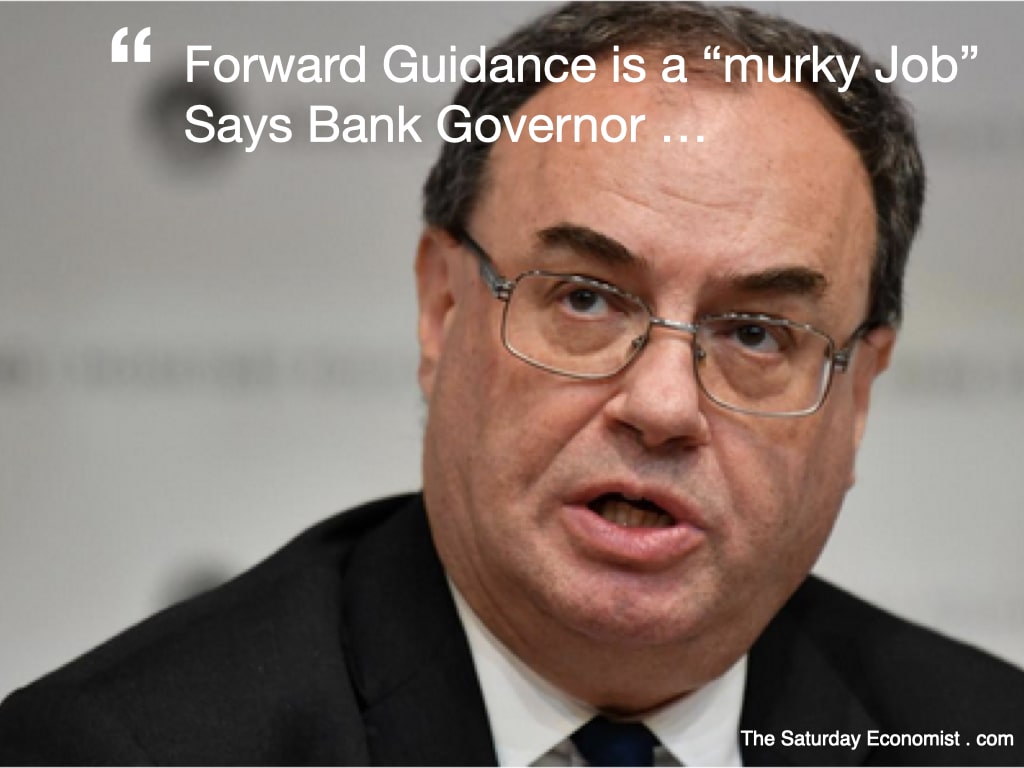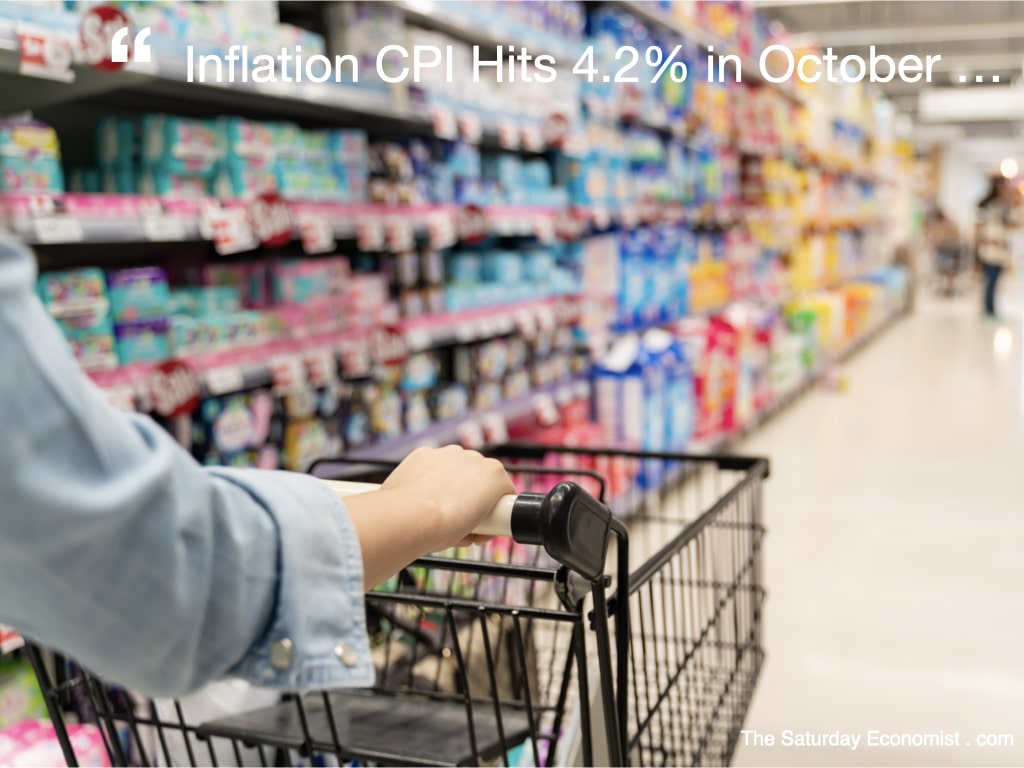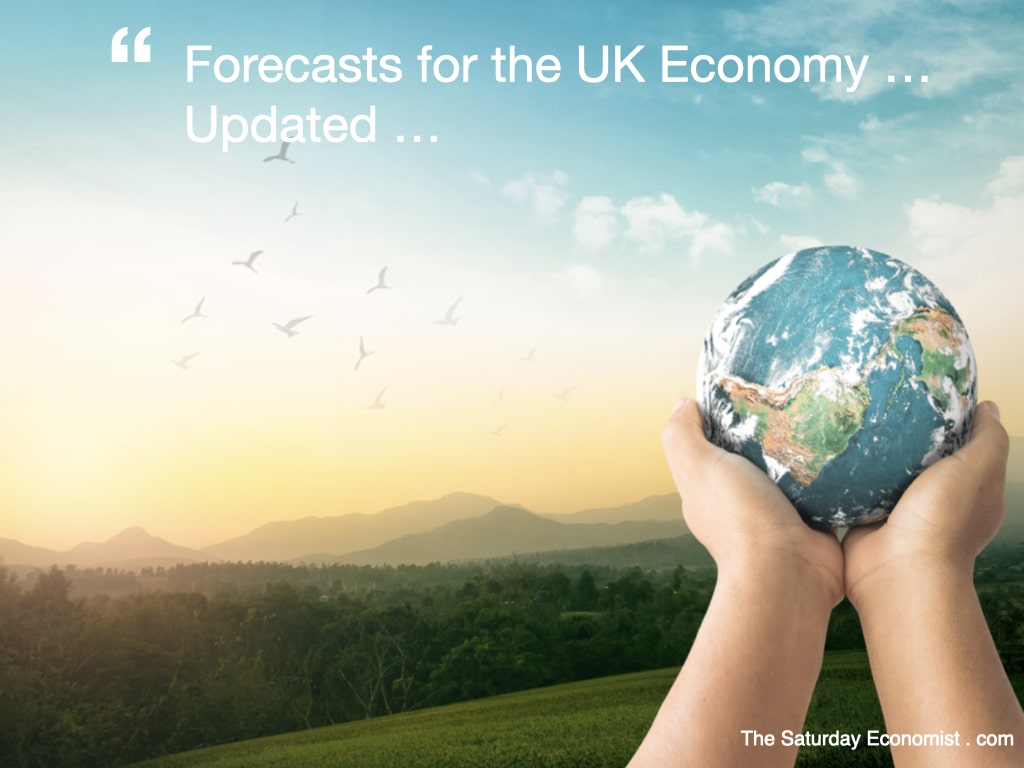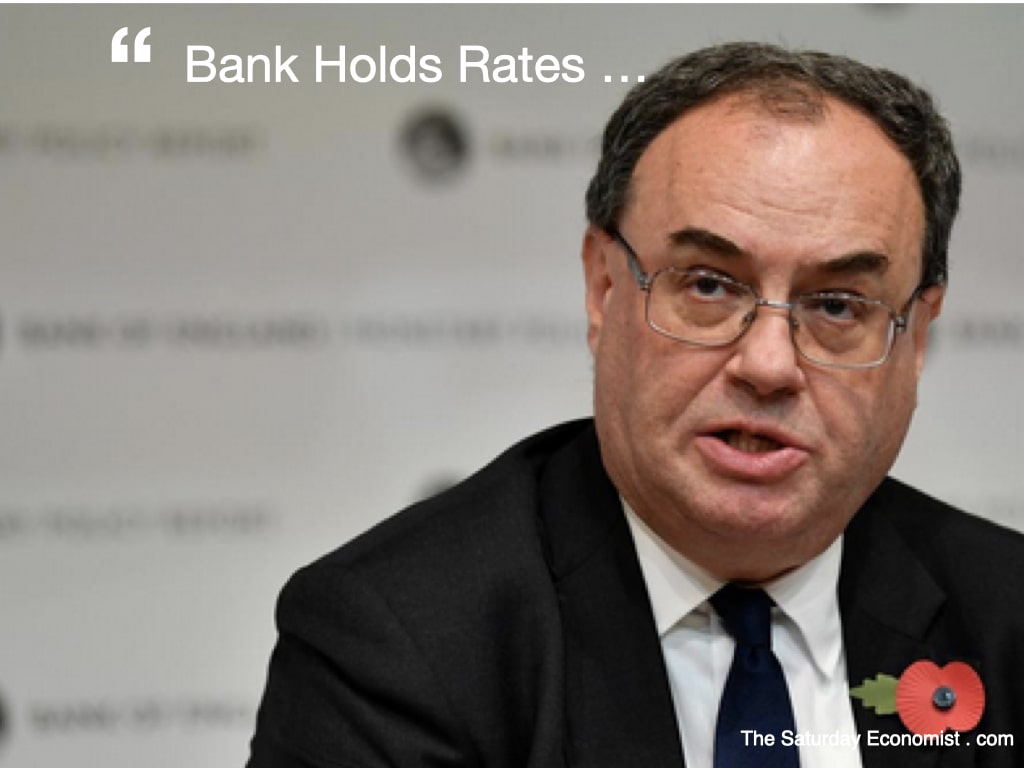|
Andrew Bailey, Governor of the Bank of England explained this week "Forward Guidance is a Murky Job". Obscure or dark and gloomy, we cannot he absolutely sure about the Governor's meaning or intent.
"The boundary between commentary on the state of the economy and what the central bank is likely to do with interest rates is hard to define." he said, especially when you consider "the words we use" he added. The system put in place by my predecessor, Mark Carney, is pretty hazardous and "more hazardous in an uncertain world". Gosh who knew it was a system. Carney announced in 2013, the Bank would consider raising rates when unemployment fell to 7%. Unemployment hit 4.3% in the latest data, inflation RPI surged to 6%. Former Governor Mervyn King berated the current crop of central bankers. Central banks have been caught unawares by rising prices. This has exposed the "King Canute" theory of inflation. In a lecture to the Institute of International Monetary Research, he explained, "A thousand years ago, King Canute (of England) set his throne by the seashore and commanded the incoming tide to halt. The tide continued to rise and dashed over his feet and legs." [But at least the number of illegal immigrants hitting the beach that day fell.] "Canute was defied by the laws of nature" and the lack of an adequate flood defense system. The moral of the story, central bankers cannot expect inflation to fall, just because the models say it will. A satisfactory theory of inflation cannot take the form of "inflation will return to target because they say it will", [just because it always worked for me.] "A central bank should not be ashamed to acknowledge that it does not know where interest rates will be in the future, because it cannot know where the economy will go in the months and years ahead." Many may prefer the murky obscurity of the current regime to the Mervyn King reality check. No such problem for Huw Pill, Chief Economist at the Bank ..."Given where we are in terms of data and analysis, I view the likely direction of travel for monetary policy from here as pretty clear". He signaled he was ready to press ahead with the first rate rise, now "the ground has been prepared for policy action". It was the clearest hint, it was said, that borrowing costs will rise, as early as next month. Students of history will recall there has been no increase in base rates in December for the last fifty years. The Chief Economist sweetened the pill with a note of caution. The economic outlook remained uncertain and there was no guarantee that rates would rise. Excellent ... The Chief Economist was speaking at the CBI conference this week, so too was the Prime Minister ... Have You Been To Peppa Pig World ...? "Hands up, if you have been to Peppa Pig World", the Prime Minister asked a startled group of business leaders on a visit to the CBI conference in the North East of England this week. Boris Johnson had been forced to beg forgiveness, as he lost his place in a rambling speech. Words passed over the head of the audience, as the pages slipped out of sequence in his hands. The Prime Minister liked Peppa Pig World. "It was my kind of place". There was order in the classrooms, no violence on the streets and an integrated transport system, with gated entry to keep out illegals. The business was now worth £6 billion, with theme parks in China, America and the New Forest. It was a tribute to the power of UK creativity. It was a pig that looked like a hairdryer. It has been rejected by the BBC. No government in the world, no Whitehall civil servant could conceivably come up with Peppa. "It was" he said "pure genius". Civil servants were shocked to realize, creating children's characters was part of the Whitehall remit. Mr Blobby was upset by Number Ten acclaim for a surreal Pig. "Have you been to Peppa Pig World" asked the Prime Minister "Not enough" the retort. It is a long way from Tyneside to the New Forest. HS2 and an integrated rail plan for the North East would help to improve traffic to the resort ... delegates were surely mumbling under their breath ... That's all for this week. Have a great weekend and a great week ahead, Don't miss our Monday Morning Markets update this week ... it was an interesting week as markets reacted to news of the Omicron variant ... John
0 Comments
Is it time to talk about overheating ... ?.
UK inflation CPI basis hit 4.2% in October. That's a big rise from the September level of 3.1%. Goods inflation increased to 4.9%. Service sector inflation jumped to 3.2%. Energy and fuel dominate the cost curve. Electricity, gas and other fuels were up by 28%. Fuel costs were up by 20%. Transport costs were up by 10%. Second hand car prices were up by 23%. Durable goods, including furniture and household appliances, were up by 10% and 7% respectively. For the moment, food prices remain below the 2% inflation target threshold. The Bank is forecasting inflation to rise to 4.5% in the final quarter, peaking at around 5% in April 2022, then averaging just over 3% for the year as a whole. This remains a fair call assuming energy costs and shipping costs ease back. Brent Crude closed below the $80 dollar level this week at $78.35. The cost of shipping a container from China to the U.S. West Coast dropped to $14,000 dollars from a peak of $21,000 in September. Producer Prices ... UK producer prices increased in October. Input costs were up by 13%. Oil prices were up by almost 90%. Metal prices were up by 20%. Chemical prices were up by over 12%. Output prices increased by 8%. The pass through rate, from input to output cost, was 61%. We model the pass through rate at 50% using long run data. The impact on goods inflation would be a rise to over 5% in the short term. Assuming service sector inflation averages 3.5% over the period. CPI inflation would peak at between 4.5% and 5%. The good news, oil prices are easing back below $80. In any case, the inflation impact wanes into the second quarter next year, as the year on year comparisons fade. Labour Market ... The latest jobs data confirms the strength of the recovery. The unemployment rate fell to 4.3%. Vacancies increased to 1.2 million. There were 32.5 million in work. Earnings increased by 5.8%. There were 1.1 million on furlough at the end of September. The expectation rises, there will be no significant increase in unemployment before the end of the year. So is it time to talk about overheating? Not yet. Retail sales were up by 5% compared to October 2019. In value terms sales were up by 10% compared to pre lock-down levels. Vibrant but not vibrating. No real need to tighten rates just yet ... Interest Rate Rises May Be Steeper ... This week, Christine Lagarde President of the EU Central Bank, suggested there would be no increase in Euro base rates in 2022. In the U.S., Fed Governor Christopher Waller argued the Fed should accelerate the tempo of tapering, with an end to further asset purchases by April. Huw Pill, the Chief Economist at the Bank of England raised the prospect the first UK rate rise could be steeper than the 15 basis point rise currently priced into markets. Governor Andrew Bailey admitted he remains "concerned about inflation". Markets begin to think a rate rise before Christmas could be a possibility. We have argued inflation, driven by energy costs, will be a transitional phenomenon. Wage costs will level out. The disruption of lock down created a "Seismic Event" . One in which the tectonic plates of demand and supply were pushed out of balance, as demand recovery surged ahead of supply impeded. The US economy faces the problem of the same "seismic event" compounded by the trillions of dollars spent by government to support the US economy. The largesse including "Helicopter Money" has augmented the demand shock. Our chart of the week is courtesy of Bridgewater. Growth in US nominal demand is way ahead of the global production of goods for U.S. consumers, increasing price pressures. Fed spending was $2.8 trillion dollars in the financial year ending September. US CPI inflation hit 6.2% in October. In the US, the seismic event was followed by the Tsunami of easy money. The Fed may have to taper faster and raise rates sooner, than markets expect. Despite the comments from Huw Pill this week, markets are now plotting an increase in rates to 0.25 early next year, rising to perhaps 1% by the end of the year. Our modified Taylor rule suggests rates could rise to 1.5% by the end of the year. Too soon to worry about overheating. Not too soon to outline the rate rise options. The synchronized swim with Europe would suggest no rate rise at all in 2022. Our modified Taylor rule suggest are rise to 1.5% by the end of the year. Our escape from Planet ZIRP would suggest a return to pre 2008 rules. Inflation at 2%. Base rates at over 4% and ten year gilts at 4.5% over the medium term. That's a risk based scenario option, not our central planning forecast ... That's all for this week. Have a great weekend and a great week ahead, Don't miss our Monday Morning Markets. The open rates are now as high as The Saturday Economist. Also coming soon our "OK Boomer" series, a purchase guide to NFTs, retail Investor Apes, and the street lingo of the new traders ... Will Bitcoin hit $500,000 dollars as some fans expect ... This week, the ONS released the latest overview of the UK economy. The "first quarterly estimate of GDP" up to and including the third quarter of the year was revealed on Thursday.
As always it made for interesting reading. It's a good opportunity to update our forecasts for the UK economy for this year and next. Growth ... Output growth in the third quarter of the year was up by 6.5% year on year. This followed growth of 24% in the second quarter and a negative downturn of almost 6% in the first quarter. Much has been made of the slow down in the economy. Nevertheless, manufacturing output was up by 4.4% in Q3, construction output was up by almost 10% and service sector growth was up by over 7%, bolstered by a near 14% growth in government output. There is evidence of a slow down in manufacturing and construction as a result of labour and supply shortages. No such evidence exists in the service sector as a whole. Assuming growth slows to around 5% year on year in the final quarter of the year, our forecast for output this year would remain unchanged at around 7.25%. The latest Bank of England assumption is for growth this year of 7% and 5% next. Our models suggest growth could be 5.5% next year slowing to a trend rate of growth at 2% by 2024. Assuming no more black swans, the economy is set to expand by over 15% over the next three years. Add in a modicum of inflation and nominal growth would be 25% over the next four years. A great backdrop to support jobs, investment and debt deflation in the years ahead. Jobs and Unemployment ... The Labour Market Update will be released on Tuesday next week. Latest data suggests the unemployment level will be around 1.5 million at the end of September. The u rate will be around 4.5%. Vacancies hit 1.1 million in the month. The numbers on furlough are estimated at 1.0 million. Latest evidence on growth, vacancies and recruitment suggests there will be no significant rise in unemployment by the end of the year as the furlough scheme comes to an end. The Bank assumes unemployment will average 4.5% though the final quarter falling to 4% by the end of next year. Our worst case scenario would suggest a rise in unemployment to 5% as we move into the New Year. A cyclical rise of almost 200,000 job losses would be absorbed through 2022. The U rate is expected to be around 4.5% by the end of next year. Trade and The Balance of Payments ... The trade data has been revised significantly in the latest data. We now expect the trade deficit in goods to rise to £156 billion this year from £130 billion last year. At 7% of GDP this would be considered a threat to stability in the not too recent past. The trade surplus in services is expected to be £140 billion. The residual £16 billion deficit in goods and services, is of itself, unlikely to undermine the strength of Sterling or threaten stability. Analysis of EU trade suggests little change in the destination of exports from the UK away from the trade group. Exports to the EU are down by 12.5% from the end of 2018. They are down by a more modest 10% to the rest of the world (rolling four quarter basis). This reveals little change in the share of export trade. Analysis of EU trade suggests imports from the rest of the world have increased share of imports to 49% by the end of Q3 from 45% at the of 2018. Imports from the EU were down by 15%. Imports from the rest of the world were down by 7%. Inflation and Interest Rates ... In the U.S. inflation CPI basis hit 6.2% in October. In the EU inflation is expected to rise to 4.1% in October. In the U.K. Inflation CPI basis is expected to rise to 3.8% in the month. The latest ONS data will be released on Wednesday. Something to look forward to! The MPC expect inflation to average 4.25% in the final quarter. It is expected to peak at around 5% in April before slowing to around 3.5% in the final quarter of the year. It will be an interesting couple of months. Energy costs are significant. The oil price is key. Brent crude closed at $82.21 this week. Gas prices await the implications of any Russian invasion of the Ukraine. Forecasting the future path of inflation is becoming really problematic. Forecasting the future path of interest rates is even more problematic. Markets are pricing in a rise in UK base rates to 1% by the end of 2022 with a 15 basis point rise by the end of the first quarter next year. Our modified Taylor rule suggests rates should rise to 1.25% by end of 2022 rising to 1.75% in the first half of 2023. This should be accepted as a "central scenario" subject to revision at any stage. The Bank forecasts for inflation form the basis of our "central scenario". We expect the peak in inflation to be sooner and slightly lower but not by much. So what will that mean for bond yields and equities? Don't miss our Monday Morning Markets Update next week ... The Vote is Seven to Two ...
The MPC voted to keep rates on hold this month. Markets misread the signals from the Bank. In the November meeting, just two members voted for a fifteen basis points rise in rates. It wasn't even a close call. Sterling fell, closing at $1.3489 against the dollar and down against the Euro at €1.1669. Ten year bond yields slumped to close at 0.85 down 18 points in the week. Volatility is returning to Forex, it has become a constant in the bond markets. The Governor took some flack, Andrew "Bailout" the call. As the successor to "Mark Carnage", he has yet some way to go before becoming the totally "unreliable boyfriend". Dave Ramsden and Michael Saunders were the hawks on the panel, the Governor and Silvana Tenreyro the notable doves. All members were convinced of the need to maintain the stock of corporate bonds at £20 billion. Probably because it was "chump change", in the grand scheme of things. Most had forgotten why they had bought them in the first place. Three members voted to reduce the target stock of UK government bond purchases from £875 billion to £855 billion. Catherine Mann, jumped onto the hawks perch, clearly forgetting the Treasury will have to issue over £180 billion bonds this year. The DMO will need more help from the buyer of last resort. No time to cut the cord just yet. The Governor may have said "The Bank will have to act" but gave no indication of the timeline. "It was a conditional statement" he explained "We make a lot of conditional statements." A move before the end of the year was always a long shot. Supply side bottlenecks do not form part of a monetary policy reaction function. "Raising rates will not cut gas prices, nor will it increase deliveries of semi conductor chips". The MPC will need time to assess the movements in the labour market as the furlough effect unwinds. "The labour market does look tight" the Governor said. If evidence develops of "inflationary expectations" becoming anchored, then rates are likely to rise. But when? The Bank has lowered the forecast for growth to 7% this year and 6% next. It has raised the forecast for inflation to 4.5% in the final quarter peaking at around 5% in April 2022, averaging over 3% over the year. Markets are now plotting an increase in rates to 0.25 early next year, rising to perhaps 1% by the end of the year. Will this be enough to return inflation to target? Will the Bank move ahead of the Fed and risk damaging the recovery in the year ahead? Our modified Taylor rule suggests rates could rise to 1.5% by the end of the year. 1% by year end now becomes our central scenario. The first hike may be just in time for Easter, that's on the 17th April next year. Chocks away, foreign travel is increasing. Catch 2022, may be the year we leave Planet ZIRP! Tickets refundable of course ... Fed Begins To Taper ... The Fed voted to maintain the target range for the federal funds rate at 0.00% to 0.25% this month. No surprise for markets over in the U.S. "Jerome the Powerful" holds court. As indicated, the committee decided to reduce the monthly pace of net asset purchases by $10 billion for Treasury securities and $5 billion for mortgage backed securities. The first cuts would take place in November and December. By the end of the year, the December spend would be $60 billion and $30 billion per month. The Committee judges that similar reductions in the pace of purchases will likely be appropriate each month. The distended Fed balance sheet would be on a firm diet by the end of June. US yields fell by thirteen basis points in the week. The Dollar rallied. The move had been well flagged and well received. A lesson in central bank communication perhaps. In the UK it is not clear why MPC members make so many market sensitive speeches, often with conflicting messages about policy direction. By the end of the week, news of over 500,000 new jobs added to Uncle Sam's workforce in October. Inflation CPI hit 5.4% in September. Congress approved A $1.2 trillion deal for infrastructure spending. The Fed is unlikely to move on rates despite the fall in the unemployment rate to 4.6%. Markets reacted with a bounce. The Dow, S&P and Nasdaq moved to record highs. The Dow closed above 36,000. *The prophetic writings of columnist James K. Glassman and economist Kevin A. Hassett were finally proved correct, just twenty years later. *Dow 36,000: The New Strategy for Profiting From the Coming Rise in the Stock Market is a 1999 book by syndicated columnist James K. Glassman and economist Kevin A. Hassett. they argued that stocks in 1999 were significantly undervalued and concluded that there would be a fourfold market increase with the Dow Jones Industrial Average rising to 36,000 by 2002 or 2004. |
The Saturday EconomistAuthorJohn Ashcroft publishes the Saturday Economist. Join the mailing list for updates on the UK and World Economy. Archives
July 2024
Categories
All
|
| The Saturday Economist |
The material is based upon information which we consider to be reliable but we do not represent that it is accurate or complete and it should not be relied upon as such. We accept no liability for errors, or omissions of opinion or fact. In particular, no reliance should be placed on the comments on trends in financial markets. The presentation should not be construed as the giving of investment advice.
|
The Saturday Economist, weekly updates on the UK economy.
Sign Up Now! Stay Up To Date! | Privacy Policy | Terms and Conditions | |




 RSS Feed
RSS Feed